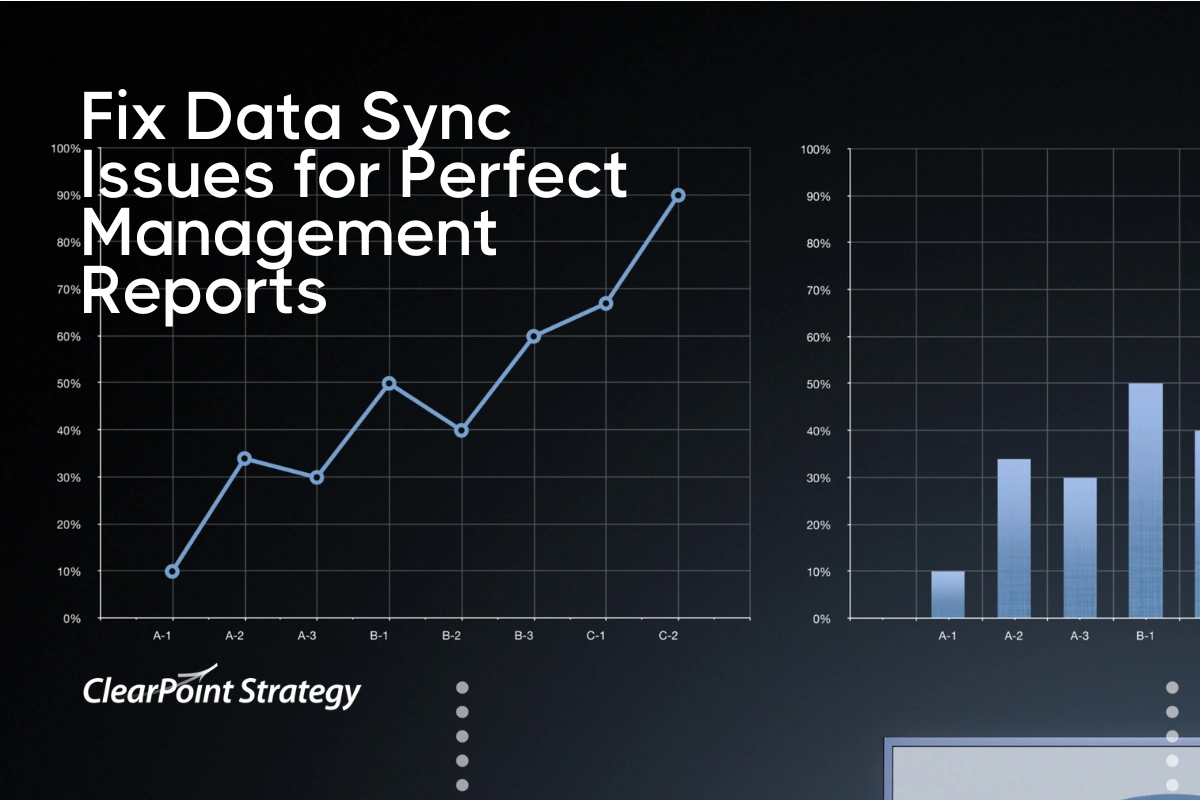Feel confident in your report numbers (and save time!) with reliable data syncing.
When management reports don’t line up with what's really happening, it’s usually a data sync issue. Everything might seem fine until someone realizes the numbers in one report don’t match another.
That’s when it gets frustrating.
You're spending way too much time double-checking numbers or correcting errors that should never have happened. All of that can create confusion, mistrust in your reports, and wasted hours.
Having reliable data syncing is key to making smart decisions. When your data updates automatically and remains accurate across the board, you don’t have to second-guess your reports. As a result, teams stay on track, leadership stays informed, and goals stay aligned. Whether you're managing a local office or a widespread operation, keeping data consistently in sync is a must for clear, confident reporting.
Common Causes Of Data Sync Problems
There are a few reasons why data syncing can go wrong. Knowing what’s behind it is the first step to fixing the problem. Here’s what often causes the biggest headaches:

1. Outdated or incompatible software
If different departments are using systems that weren’t made to work together, or one or more departments are still relying on older versions of reporting software, syncing issues are almost guaranteed. These older systems may not talk to each other properly, causing delays or errors in how data is shared.
2. Network issues and connectivity problems
If the internet connection drops or slows down during syncing, that can stop the process or lead to incomplete uploads. Even small interruptions can have lasting effects if they happen during key data transfers, making some reports show outdated or partial information.
3. Poor configuration or manual data entry errors
Human error plays a big role here. Incorrect formulas, misaligned fields, or data entered in the wrong places can all lead to bad syncs. Sometimes, people assume a file synced just because it was uploaded, but poor configuration might mean it didn't update anything.
Let’s say someone updates a spreadsheet that isn't linked properly to the reporting system. Now, the new numbers won’t show up in time or at all, and that can throw off a whole report before anyone notices.
Identifying Signs Of Data Sync Problems
Spotting these problems early makes them easier to fix and avoids bigger issues later. Here’s what to watch out for:
- Reports that show conflicting numbers across departments
- Data changes that take too long to appear in your main reports
- Teams are adjusting the same report over and over
These are clear indicators that your system isn’t syncing like it should. It’s especially noticeable when one person updates a figure but another team sees old data. Communication gets messy, updates get missed, and it all leads to wasted time trying to figure out what’s true and what’s out of date.
When corrections become part of your daily routine, there’s a deeper issue at play and it usually starts with your sync process. Spotting these signs early helps you take quicker action to get your system back on track.
Solutions For Fixing Data Sync Problems
Fixing data sync issues starts with addressing the root causes we identified.
Upgrading your software to one that's compatible with current standards can make a world of difference. Newer software is typically built to handle larger data loads and usually offers better compatibility between systems. It can also provide more reliable updates, reducing the chance of data discrepancies.
Ensuring a stable and reliable network connection prevents many headaches as well. Conduct regular checks on your network's stability and address any connectivity lags or outages quickly. It may be helpful to have a backup connection in place to minimize interruptions during key syncing times. A stable network makes data transfers go more smoothly.
Implementing best practices for data collection and configuration can also improve syncing. Sometimes everything is set up perfectly but small errors in data entry cause issues. Establish clear guidelines for data entry along with regular training sessions for staff. Make sure everyone is aware of the correct procedures and follows the same protocols.
Preventive Measures And Best Practices
Preventing a problem from arising in the first place is always better than dealing with recurring issues.
Regular software updates and maintenance ensure that your systems stay compatible and function the way they should. Set up a routine for updates, and make it a priority. This helps reduce the risk of bugs or compatibility problems that can throw off your sync processes.
Train your staff well so they know how to manage the data and use the system correctly. When everyone understands how everything works, it reduces manual errors dramatically. This also means fewer calls to your IT team and smoother daily operations. Consider conducting workshops or scheduling annual refresher sessions to keep your teams confident and informed.
Automated monitoring and alert systems are also incredibly helpful. These systems let you know when a sync fails or when something doesn’t look right. Learning about these issues early means you can fix things before they cause bigger reporting problems. It’s an added safeguard that looks out for your data around the clock.
Ensuring Smooth Management Reporting
When data sync works the way it should, reporting is accurate and dependable. This results in better decision-making at every level.
Reliable numbers allow leaders to focus on strategy rather than troubleshooting. Whether you're working on quarterly goals or setting a long-term direction, your reports are only as good as the data behind them.
Smooth syncing takes the pressure off your reporting process. It eliminates second-guessing, reduces manual tasks, and helps teams stay coordinated. You’ll find that even routine check-ins and monthly reviews become easier when you're confident your data is telling the full story.
Make regular reviews a part of your process. This lets you assess what’s working and catch any small issues before they become problems. Keeping your systems updated and your teams informed supports long-term success and promotes smart, steady growth.
Keeping Your Data Sync in Check
If your reports aren’t lining up, it’s probably a data sync problem. Whether it's outdated software, unreliable networks, or human error, the result is the same—confused teams and wasted time. Smooth syncing improves your reporting, saves time, and enhances communication across the board. Most importantly, your team can stay focused on what really matters—achieving your strategy.
If your goal is accurate, dependable reporting, take a look at ClearPoint Strategy. It offers automatic, real-time data synchronization and has built-in tools that can quickly identify data inconsistencies or gaps. You can virtually eliminate data sync problems, create more trustworthy reports, and optimize your performance tracking, all with a single reporting tool. Book a demo and see ClearPoint for yourself!

.svg)




